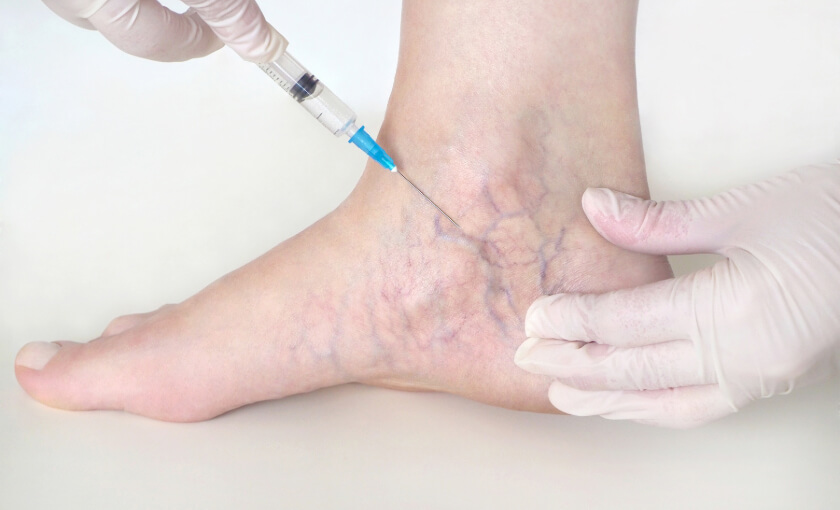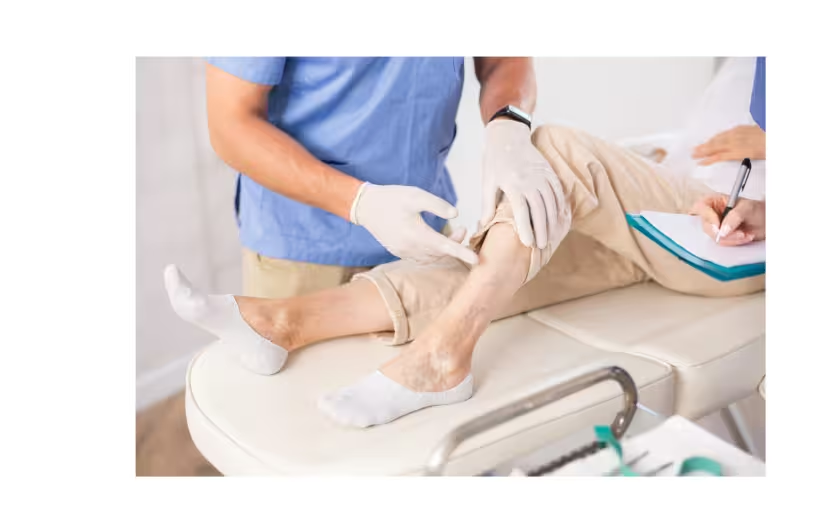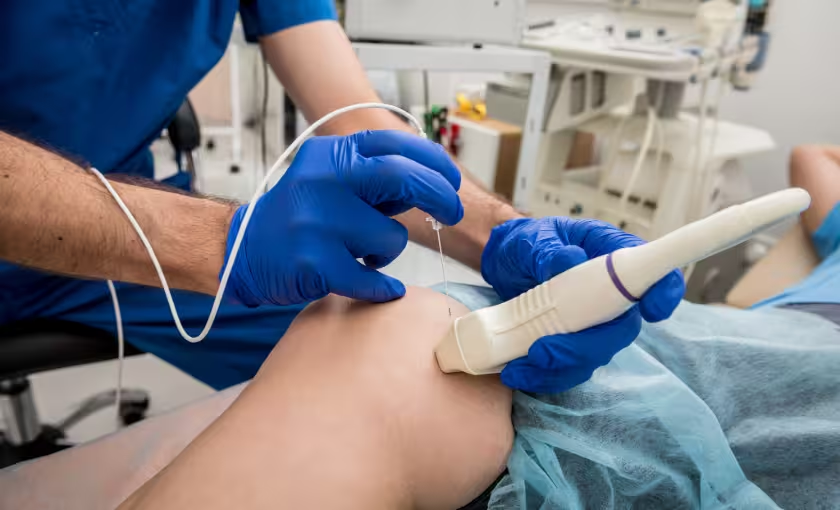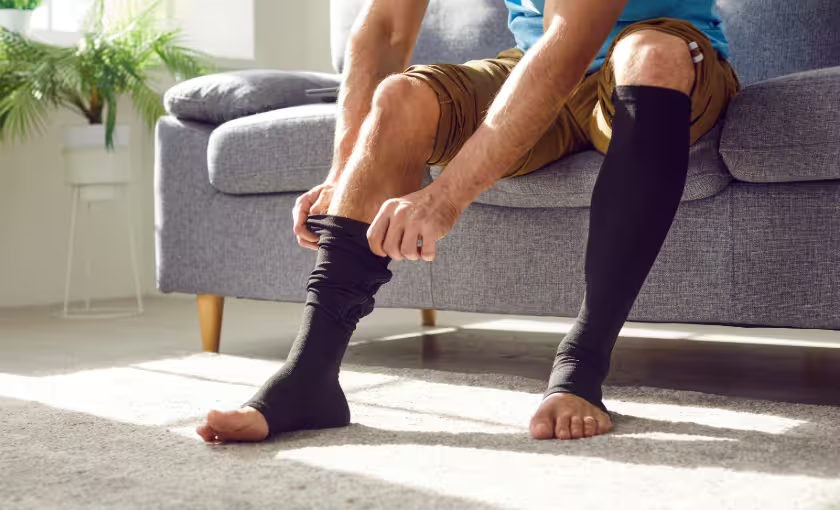Sclerotherapy Procedures: The Gold Standard for Spider Vein Treatment

Sclerotherapy stands as one of the most time-tested and effective treatments in venous medicine, representing over a century of refinement and innovation in the treatment of spider veins and small varicose veins. This proven procedure has helped millions of patients worldwide achieve clearer, more attractive legs while eliminating the discomfort and self-consciousness that often accompany visible vein problems. For patients seeking reliable, effective treatment for spider veins, sclerotherapy remains the gold standard that combines proven results with excellent safety and patient satisfaction.
BASS Vein Center's extensive experience with sclerotherapy procedures spans over three decades, during which the center has performed thousands of successful treatments using the most advanced techniques and sclerosing agents available. This wealth of experience, combined with ongoing training in the latest sclerotherapy innovations, ensures that patients receive the highest quality care and optimal treatment outcomes from specialists who have mastered this essential procedure.
Understanding sclerotherapy involves appreciating both the elegant simplicity of the procedure and the sophisticated expertise required to achieve optimal results. While the basic concept of injecting a sclerosing solution into problematic veins is straightforward, the artistry and skill involved in selecting appropriate patients, choosing the right sclerosing agents, and executing precise injection techniques make the difference between good and exceptional outcomes.
The Science and Mechanism of Sclerotherapy
Sclerotherapy works by introducing a sclerosing agent directly into the problematic vein, causing controlled damage to the vein wall that results in inflammation, closure, and eventual absorption of the treated vessel by the body. This targeted approach allows for precise treatment of individual veins while leaving surrounding healthy tissue unaffected, making it an ideal treatment for the delicate spider veins that often appear on the legs and face.
The sclerosing agents used in modern sclerotherapy are carefully formulated solutions that have been extensively tested for safety and effectiveness. These agents work by causing controlled chemical damage to the endothelial lining of the vein wall, triggering an inflammatory response that leads to vein closure. The most commonly used sclerosing agents include sodium tetradecyl sulfate, polidocanol, and hypertonic saline, each with specific properties that make them suitable for different types of veins and patient situations.
The mechanism of vein closure following sclerotherapy involves several biological processes that occur over weeks to months following treatment. Initially, the sclerosing agent causes immediate damage to the vein wall, leading to inflammation and swelling that closes the vein lumen. Over time, the body's natural healing processes cause the treated vein to be gradually absorbed and replaced by fibrous tissue that eventually becomes virtually undetectable.
The selectivity of sclerotherapy allows for targeted treatment of specific problematic veins while preserving healthy vessels in the surrounding area. This precision is particularly important when treating spider veins, which often occur in complex networks where careful selection of injection sites can achieve optimal cosmetic results while minimizing the number of treatments required.
The concentration and volume of sclerosing agent used must be carefully calibrated based on the size and characteristics of the veins being treated. Smaller spider veins require lower concentrations and smaller volumes, while larger reticular veins may need stronger solutions and larger volumes to achieve effective closure. This individualized approach to treatment planning is essential for achieving optimal outcomes while minimizing the risk of complications.
Types of Sclerosing Agents and Their Applications
Modern sclerotherapy utilizes several different types of sclerosing agents, each with specific properties and applications that make them suitable for different types of veins and patient situations. Understanding these different agents and their appropriate uses is essential for achieving optimal treatment outcomes and patient satisfaction.
Sodium tetradecyl sulfate represents one of the most widely used sclerosing agents, offering excellent effectiveness for a broad range of vein sizes and types. This detergent-based sclerosant is available in various concentrations, allowing for customized treatment approaches based on the specific characteristics of the veins being treated. Its proven track record and excellent safety profile have made it a preferred choice for many vein specialists.
Polidocanol, also known as hydroxypolyethoxydodecane, offers the advantage of being less painful during injection compared to other sclerosing agents, making it particularly appealing for patients who are sensitive to discomfort. This agent is available in both liquid and foam formulations, with foam sclerotherapy offering enhanced contact with the vein wall and improved effectiveness for certain types of veins.
Hypertonic saline, one of the oldest sclerosing agents still in use, remains effective for certain applications, particularly smaller spider veins. While it may cause more discomfort during injection compared to newer agents, its long track record of safety and effectiveness makes it a valuable option in the sclerotherapy arsenal.
Foam sclerotherapy represents an important advancement in sclerosing agent delivery, utilizing a foam formulation that provides enhanced contact with the vein wall and improved visualization during treatment. The foam displaces blood from the treated vein more effectively than liquid sclerosants, potentially improving treatment outcomes for certain types of veins.
The selection of appropriate sclerosing agents depends on multiple factors, including the size and type of veins being treated, patient comfort preferences, and the specialist's experience with different agents. Experienced practitioners often use different agents for different situations within the same treatment session, optimizing the approach for each specific vein being treated.
Patient Selection and Treatment Planning
Successful sclerotherapy outcomes depend heavily on appropriate patient selection and comprehensive treatment planning that considers individual patient factors, vein characteristics, and treatment goals. Understanding these selection criteria and planning considerations is essential for achieving optimal results and patient satisfaction.
Ideal candidates for sclerotherapy include patients with spider veins, reticular veins, and small varicose veins who are seeking improvement in both the appearance and symptoms associated with these vessels. Patients should have realistic expectations about treatment outcomes and be committed to following post-treatment care instructions to optimize results.
Vein assessment involves detailed examination of the problematic veins to determine their size, depth, and relationship to other vessels in the area. This assessment helps guide the selection of appropriate sclerosing agents and injection techniques while identifying any underlying venous insufficiency that may need to be addressed before or in conjunction with sclerotherapy treatment.
Medical history evaluation is important for identifying any conditions or medications that might affect treatment outcomes or increase the risk of complications. Certain medical conditions, such as active blood clots or severe peripheral arterial disease, may contraindicate sclerotherapy treatment, while other factors may require special precautions or modifications to the treatment approach.
Treatment goals should be clearly defined and discussed with patients to ensure that expectations are realistic and achievable. While sclerotherapy can achieve excellent improvement in the appearance of spider veins, patients should understand that multiple treatment sessions may be required and that some veins may be more responsive to treatment than others.
Timing considerations may be important for some patients, particularly those who want to ensure that any temporary side effects have resolved before important events or activities. Treatment is often scheduled to allow adequate healing time before beach vacations, weddings, or other occasions where leg appearance is particularly important.
The Sclerotherapy Procedure Experience
Understanding what to expect during a sclerotherapy procedure helps patients feel more comfortable and confident about their treatment choice. The procedure is designed to be as comfortable and efficient as possible while ensuring optimal treatment outcomes and patient safety.
Pre-treatment preparation is minimal, with patients typically able to maintain their normal activities and medications leading up to the procedure. The main preparation involves wearing comfortable clothing that allows easy access to the treatment area and avoiding certain medications or supplements that might increase bleeding risk.
The treatment environment is designed to be comfortable and relaxing, with patients typically lying on an examination table in a position that allows optimal access to the veins being treated. Good lighting and magnification are essential for precise injection technique and optimal treatment outcomes.
Injection technique involves using very fine needles to deliver the sclerosing agent directly into the problematic veins. The specialist uses careful visualization and palpation to ensure accurate needle placement and appropriate distribution of the sclerosing agent throughout the treated vessel.
Patient comfort during the procedure is maintained through gentle injection techniques, appropriate needle selection, and the use of sclerosing agents that minimize discomfort. Most patients describe the sensation as similar to a small pinprick, with minimal discomfort during the actual injection process.
Treatment duration varies depending on the number and size of veins being treated, but most sessions take between 15 to 45 minutes. Multiple veins can typically be treated during a single session, making the procedure efficient and convenient for busy patients.
Post-treatment care begins immediately after the procedure, with compression stockings or bandages applied to the treated areas to support the healing process and optimize treatment outcomes. Patients receive detailed instructions for post-treatment care and activity modifications.
Post-Treatment Care and Recovery
Proper post-treatment care is essential for achieving optimal outcomes from sclerotherapy and minimizing the risk of complications. Understanding what to expect during the recovery period and following appropriate care instructions helps ensure the best possible results.
Compression therapy is typically recommended for a period following sclerotherapy treatment, usually involving the use of compression stockings or elastic bandages to support the healing process. This compression helps keep the treated veins closed and reduces the risk of complications while promoting optimal healing.
Activity guidelines following sclerotherapy encourage patients to resume normal walking and daily activities immediately, as movement helps promote healthy circulation and supports the healing process. However, strenuous exercise and activities that might increase venous pressure may be restricted for a few days following treatment.
Expected side effects following sclerotherapy are generally mild and temporary, including possible bruising, swelling, or temporary darkening of the skin along the treated veins. These effects typically resolve within a few weeks and are considered normal parts of the healing process.
Follow-up appointments are scheduled to monitor treatment progress and determine if additional sessions are needed to achieve optimal results. These appointments also provide opportunities to address any concerns and assess the need for touch-up treatments.
Signs of successful treatment include gradual fading of the treated veins over the weeks following the procedure, with optimal results typically visible within one to three months. Some veins may require multiple treatment sessions to achieve complete resolution.
Long-term care involves maintaining overall vein health through lifestyle modifications and sun protection to prevent the development of new spider veins. While sclerotherapy provides excellent results for treated veins, it does not prevent the formation of new veins in other areas.
Advanced Sclerotherapy Techniques
Modern sclerotherapy has evolved to include several advanced techniques that can improve treatment outcomes and expand the range of veins that can be effectively treated. Understanding these advanced approaches helps patients appreciate the sophistication of current sclerotherapy practice.
Foam sclerotherapy utilizes a foam formulation of sclerosing agents that provides enhanced contact with the vein wall and improved effectiveness for certain types of veins. The foam is created by mixing the liquid sclerosant with air or gas, creating a substance that displaces blood more effectively and provides better visualization during treatment.
Ultrasound-guided sclerotherapy allows for treatment of deeper veins that may not be visible on the surface but contribute to the development of spider veins. This technique uses ultrasound imaging to guide needle placement and monitor the distribution of sclerosing agent, enabling treatment of veins that would not be accessible with traditional surface injection techniques.
Micro-sclerotherapy involves the use of very fine needles and specialized magnification to treat the smallest spider veins with exceptional precision. This technique requires considerable skill and experience but can achieve excellent cosmetic results for even the most delicate vein networks.
Combination therapy approaches may involve using sclerotherapy in conjunction with other treatment modalities to achieve comprehensive results for complex vein problems. This might include combining sclerotherapy with laser treatment or other procedures to address different types of veins within the same treatment area.
Sequential treatment protocols involve carefully planned series of sclerotherapy sessions designed to achieve optimal results while minimizing the risk of complications. These protocols take into account the healing process and the body's response to treatment to optimize timing and technique for subsequent sessions.
Managing Expectations and Optimizing Results
Successful sclerotherapy outcomes depend not only on proper technique and patient selection but also on appropriate expectation management and optimization of factors that contribute to treatment success. Understanding these aspects helps ensure patient satisfaction and optimal results.
Realistic expectations about sclerotherapy outcomes include understanding that multiple treatment sessions are often required to achieve optimal results, particularly for extensive spider vein networks. While significant improvement can typically be achieved, complete elimination of all visible veins may not always be possible or may require several treatment sessions.
Individual variation in treatment response means that some patients may see dramatic improvement after just one or two sessions, while others may require additional treatments to achieve their desired results. Factors such as vein size, skin type, and individual healing characteristics can all influence treatment outcomes.
Optimization strategies for improving sclerotherapy results include maintaining healthy lifestyle habits, protecting the skin from sun damage, and following all post-treatment care instructions carefully. These factors can significantly impact both the immediate results and the long-term success of sclerotherapy treatment.
Prevention of new spider veins involves understanding and addressing the underlying factors that contribute to their development, including genetic predisposition, hormonal influences, and lifestyle factors. While sclerotherapy can effectively treat existing veins, ongoing prevention strategies help maintain optimal results over time.
Touch-up treatments may be recommended to achieve optimal cosmetic results or to address any veins that did not respond completely to initial treatment. These additional sessions are often less extensive than initial treatments and can help achieve the final results that patients desire.
Safety Considerations and Risk Management
Sclerotherapy is generally a very safe procedure when performed by experienced specialists using appropriate techniques and patient selection criteria. Understanding the safety aspects of sclerotherapy helps patients make informed decisions about their treatment and feel confident about their choice.
Common side effects of sclerotherapy are generally mild and temporary, including possible bruising, swelling, temporary skin discoloration, and mild discomfort at injection sites. These effects typically resolve within a few weeks and are considered normal parts of the healing process.
Rare complications can include allergic reactions to sclerosing agents, skin ulceration, or the development of small blood clots in treated veins. While these complications are uncommon, experienced practitioners are trained to recognize and manage them appropriately should they occur.
Risk minimization strategies include careful patient selection, appropriate choice of sclerosing agents and concentrations, proper injection techniques, and comprehensive post-treatment care instructions. These measures help ensure that sclerotherapy procedures are performed safely with minimal risk of complications.
Patient education about potential risks and side effects is an important part of the treatment process, ensuring that patients understand what to expect and know when to seek medical attention if concerns arise. This education helps patients feel more comfortable about their treatment and promotes better outcomes.
Emergency protocols are in place to address any rare serious complications that might occur during or after sclerotherapy treatment. While such complications are extremely uncommon, having appropriate protocols ensures that patients receive prompt, appropriate care if needed.
Cost Considerations and Treatment Value
Understanding the financial aspects of sclerotherapy treatment is important for making informed decisions about care. While sclerotherapy represents an investment in appearance and comfort, many patients find that the benefits justify the cost when all factors are considered.
Treatment costs for sclerotherapy vary depending on the extent of treatment required, the number of sessions needed, and the specific techniques used. Most sclerotherapy treatments are considered cosmetic and are not covered by insurance, although treatment of symptomatic veins may sometimes qualify for coverage.
Value proposition of sclerotherapy includes not only the cosmetic improvement achieved but also the boost in confidence and quality of life that many patients experience after successful treatment. The ability to wear shorts, skirts, and swimwear without self-consciousness can have significant psychological and social benefits.
Cost comparison with other treatment options should consider both the initial treatment cost and any ongoing maintenance requirements. Sclerotherapy often provides excellent value when compared to other cosmetic treatments, particularly given its proven track record and long-lasting results.
Payment options may be available to help make sclerotherapy treatment more accessible for patients who want to benefit from this proven procedure. These options can help patients achieve their aesthetic goals without financial strain.
Investment in prevention through lifestyle modifications and sun protection can help maintain sclerotherapy results and prevent the need for extensive future treatments, making the initial investment in treatment more valuable over time.
The Future of Sclerotherapy
Sclerotherapy continues to evolve with ongoing research and development in sclerosing agents, injection techniques, and combination therapies that promise to further improve outcomes and expand treatment options for patients with spider veins and small varicose veins.
New sclerosing agents under development may offer improved effectiveness, reduced side effects, or enhanced patient comfort compared to currently available options. These developments could further improve the already excellent outcomes achieved with current sclerotherapy techniques.
Improved delivery systems and injection techniques continue to be refined through clinical experience and research, potentially making treatments more comfortable and effective while reducing the number of sessions required to achieve optimal results.
Combination therapy approaches that integrate sclerotherapy with other treatment modalities may provide enhanced results for complex vein problems, offering patients more comprehensive solutions for their venous concerns.
Enhanced imaging and guidance systems may improve the precision of sclerotherapy treatments and expand the range of veins that can be effectively treated, potentially improving outcomes for challenging cases.
Conclusion: The Enduring Excellence of Sclerotherapy
Sclerotherapy remains the gold standard for spider vein treatment, offering patients a proven, effective, and safe solution for improving the appearance of their legs and eliminating the discomfort associated with problematic veins. The combination of over a century of clinical experience, ongoing refinements in technique and agents, and excellent patient satisfaction makes sclerotherapy an outstanding choice for most patients with spider veins.
The versatility of sclerotherapy, with its ability to treat a wide range of vein sizes and types using different agents and techniques, ensures that most patients can benefit from this proven procedure. The relatively simple nature of the treatment, combined with minimal downtime and excellent cosmetic results, makes sclerotherapy particularly appealing for busy individuals who want effective treatment without significant disruption to their lives.
BASS Vein Center's extensive experience with sclerotherapy procedures, developed through decades of clinical practice and ongoing education in the latest techniques, ensures that patients receive the highest quality care and optimal outcomes. The center's commitment to staying current with advances in sclerotherapy technology and techniques means that patients have access to the most refined and effective treatment approaches available.
For individuals who are ready to address their spider veins with a proven, effective treatment that has helped millions of patients worldwide achieve clearer, more attractive legs, sclerotherapy represents an excellent choice that can provide lasting improvement and renewed confidence. The combination of proven effectiveness, excellent safety profile, and high patient satisfaction makes sclerotherapy the ideal solution for most patients seeking spider vein treatment.
Don't let spider veins continue to affect your confidence and limit your clothing choices. Contact BASS Vein Center today at (925) 489-1684 to learn more about sclerotherapy procedures and discover how this time-tested treatment can help you achieve clearer, more attractive legs. Your journey toward better-looking legs and increased confidence begins with a simple phone call to the team that has the expertise and experience to help you achieve optimal results with the gold standard of spider vein treatment.
Take the First Step to Ending Annoying Varicose Vein Discomfort.






.svg)


